Guns made in the Far East represent can good value for money, but what does a used example have to offer? Pete Evans takes a closer look at a used BAM XS-B19 to find out...
There was a time when airguns manufactured in the Far East had a reputation of being crude, lacking in quality, and not to put too fine a point on it – cheap. In more recent years, though, the quality of the products leaving Chinese factories has changed beyond all recognition, with big names like Remington and SMK commissioning factories in China to make guns bearing their name. These big companies have spent years making a name for themselves in the shooting world, and know only too well that a false move on their part will soon have the shooting community baying for blood. In short, they have done their homework and know that this new breed of product offers quality and unrivalled value for money, which will keep their hard-won customers firmly in the fold.
Last year, I had the pleasure of buying a Remington Pest Controller, which was a new gun at an unbelievable price, far outperforming my preconceived ideas and making a mockery of any prejudices. Thanks to my ever-supportive dealer – Neath Gun Shop – I am able to bring another rifle to the attention of those with a cost-conscious disposition, but this time it’s secondhand and came to me as a complete package for the princely sum of £70. So, ladies and gentlemen, it’s time to sit back, relax, and allow me to introduce the BAM XS-B19, complete with its AGS 3-9 x 40 scope.
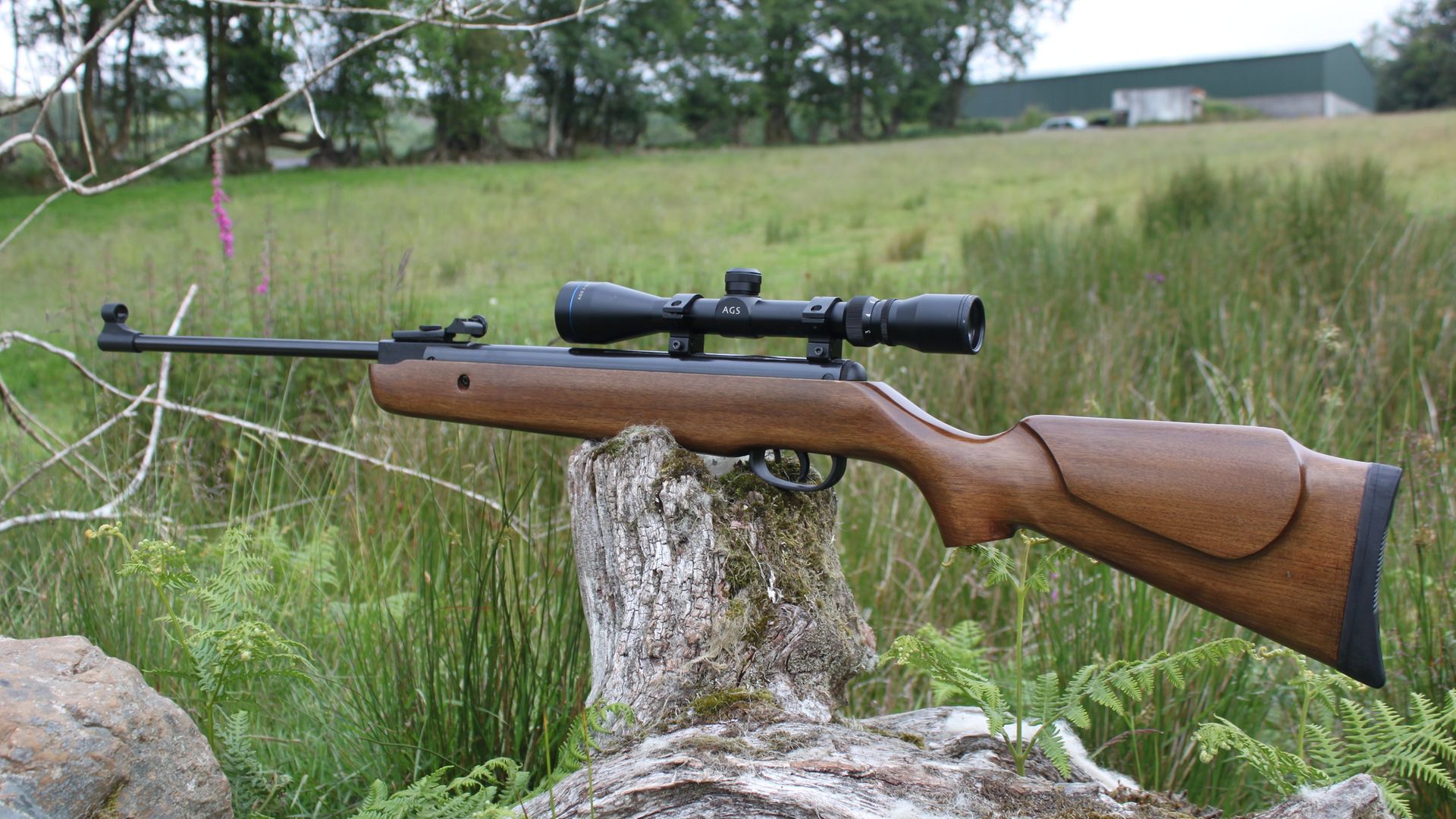 credit: Archant
credit: Archant
What is BAM?
BAM is probably not a name that will be over-familiar with many us, although you might be very familiar with their products because they will be available under a number of different names.
Entering the world of gun manufacturing in 1965, initially with firearms, it was in 1980 that the attentions of BAM turned to making sporting air rifles. From what I have seen, these guns have been mostly spring derived, consisting of break-barrels, under- and sidelevers.
Regular readers will recall seeing a review by John Milewski on the BAM B3, an AK47-inspired sidelever, also as I recall, available as the ‘Ratter’ back in the early ‘90s. The BAM name itself seems to be less common these days, the rifles assuming the identity of the company for which the rifle has been made. My own example does bear the BAM name, though, so in some respects might be a little more, dare I say, rare. So, we have established that this gun has more identities than an under-cover agent, but what does this BAM have to offer?
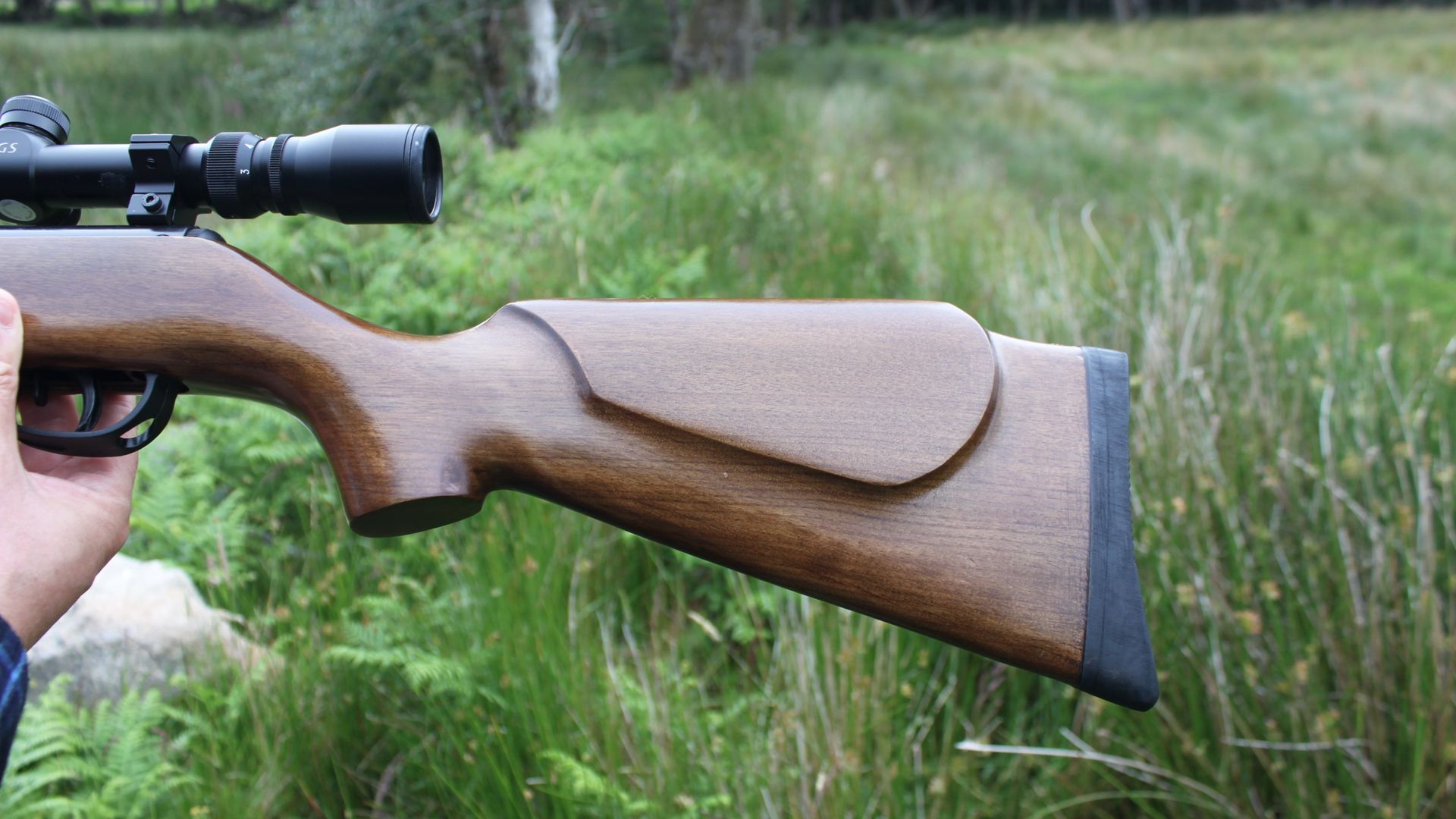 credit: Archant
credit: Archant
Overview of the BAM XS-B19
With a scoped weight of 6.6lbs and an overall length of 42.5”, this is an adult-sized rifle, although the light weight means that it would be light enough to carry around for an extended hunt, or indeed be used by a younger shot.
With a fixed rubber butt pad, and right-sided Monte Carlo-style cheek piece, the rifle comes to the shoulder nicely and is comfortable in use. The 3-9 x 40 scope in medium height mounts, for me, proved an excellent choice, giving a good repeatable head position without inducing any neck tension.
The stock itself is beech, devoid of chequering but finished very well in a walnut stain, which to my eye looks much better than similar guns I have seen. The pistol grip has a shallow rake, which might mean that shooters with small hands could feel it a bit of a stretch to get to the trigger.
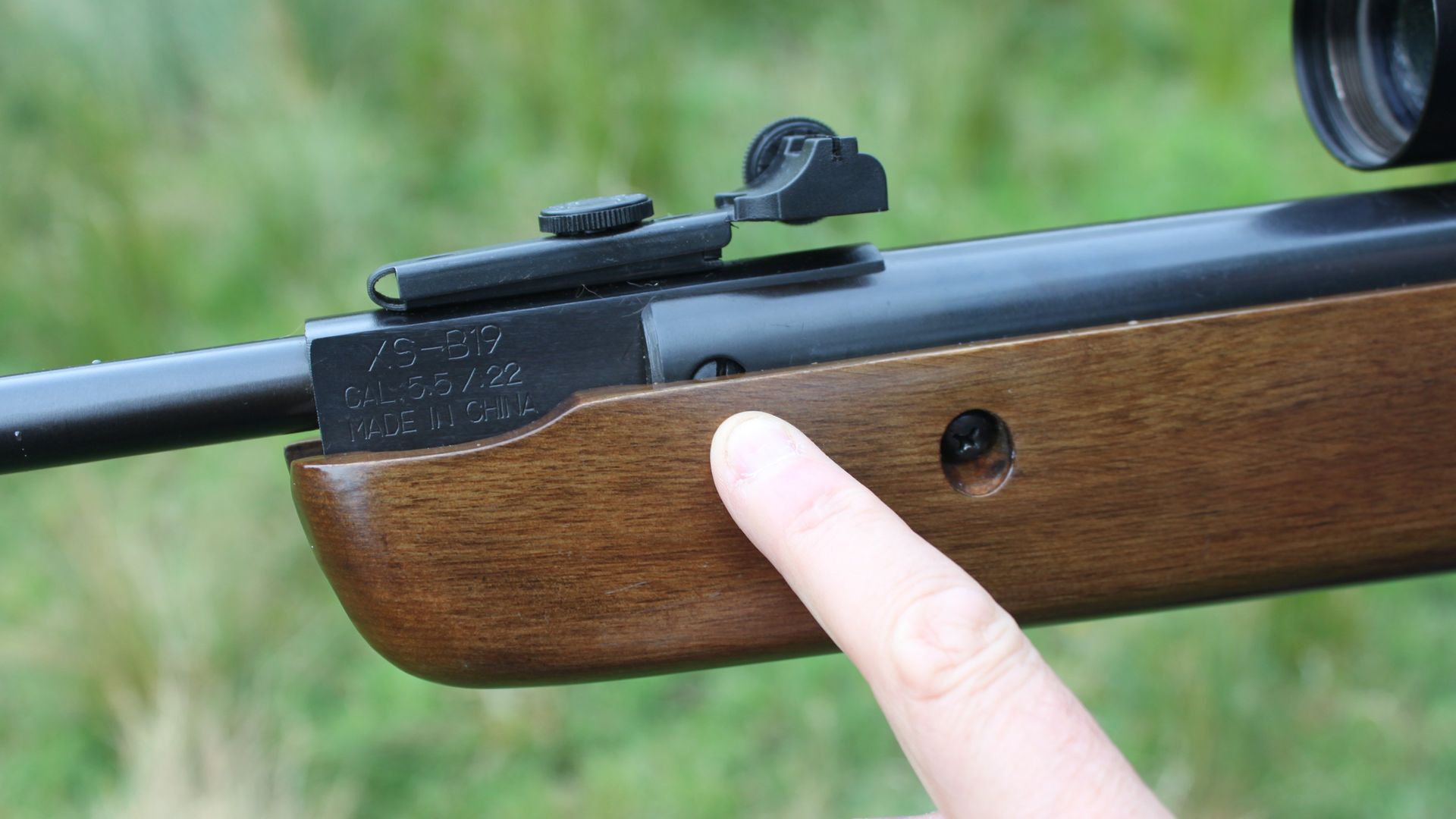 credit: Archant
credit: Archant
BAM XS-B19 trigger
The trigger unit is a clone of the Gamo design, seen on many of their spring guns, and also on the Rapid7 Mk1, which I am sure you will be acquainted with should you read my sister article.
Whilst it could be described as two-stage, the first stage doesn’t actually have a bearing on the sear engagement, leaving all the release on the second stage.
Having used a number of triggers of this design, I can tell you that there is often a large amount of creep present on the second stage, which isn’t always easy to eliminate. Reducing the creep means reducing sear engagement and that can make the trigger unpredictable, and in extreme cases dangerous. Oft times there will be a compromise between keeping things safe and learning to live with a degree of creep.
The trigger as found on this particular rifle was actually pretty good; a fairly heavy 4lb second-stage pull weight, but with just a small amount of creep, which on a rifle at this point was quite acceptable. A trigger on the heavier side of light is not always a bad idea on a field gun, especially when fingers are a bit cold.
I mentioned earlier that the trigger blade might be a bit out of reach for some, so substituting for a GRT-style blade would likely improve matters and also improve the function, should you feel it necessary. To top matters off, there is an effective safety catch that rocks fore and aft, effectively blocking the movement of the blade, all contained within the trigger guard.
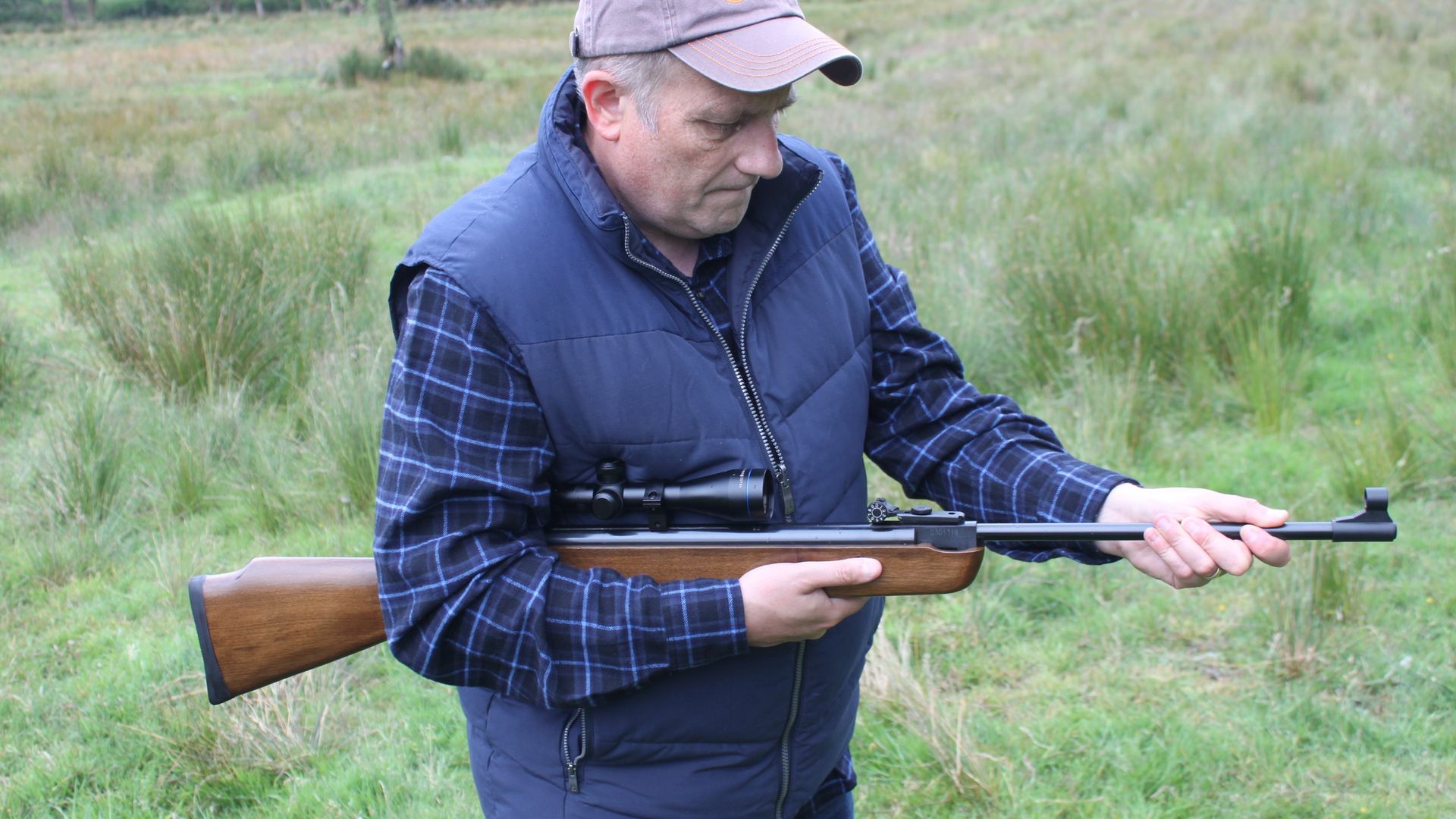 credit: Archant
credit: Archant
The BAM XS-B19 break barrel
Cocking the BAM, courtesy of its 16.5” barrel, doesn’t present a chore; the barrel latch is strong enough to hold everything secure, without any hint of barrel droop, yet not so overly strong that you’d require a karate chop to break the union.
A pair of adjustable open sights adorn the barrel – a welcome option in a world dominated by scopes – but fear not, there is a pair of generously cut scope rails.
The barrel itself is secured by a bolt rather than a pin – always the preferred option. I always make a point of subjecting break-barrel guns to the ‘wiggle test’, which entails holding the rear section firmly, whilst simultaneously grasping the barrel and attempting to move it from side to side. Any movement will have the potential to introduce inaccuracy if the barrel returns to the block in a slightly different position.
When loading a break-barrel I do like to seat the pellet just below the surface of the breach, to ensure that the pellet skirt doesn’t become distorted on closure. I found this a little more difficult on this rifle, with pellets remaining nearly flush with the breach, even with targeted finger pressure. A few trial runs of opening and shutting the barrel failed to disclose any damaged skirts, so my concerns soon dissipated, although I did make a mental note to change the breech washer because it did seem a bit flat.
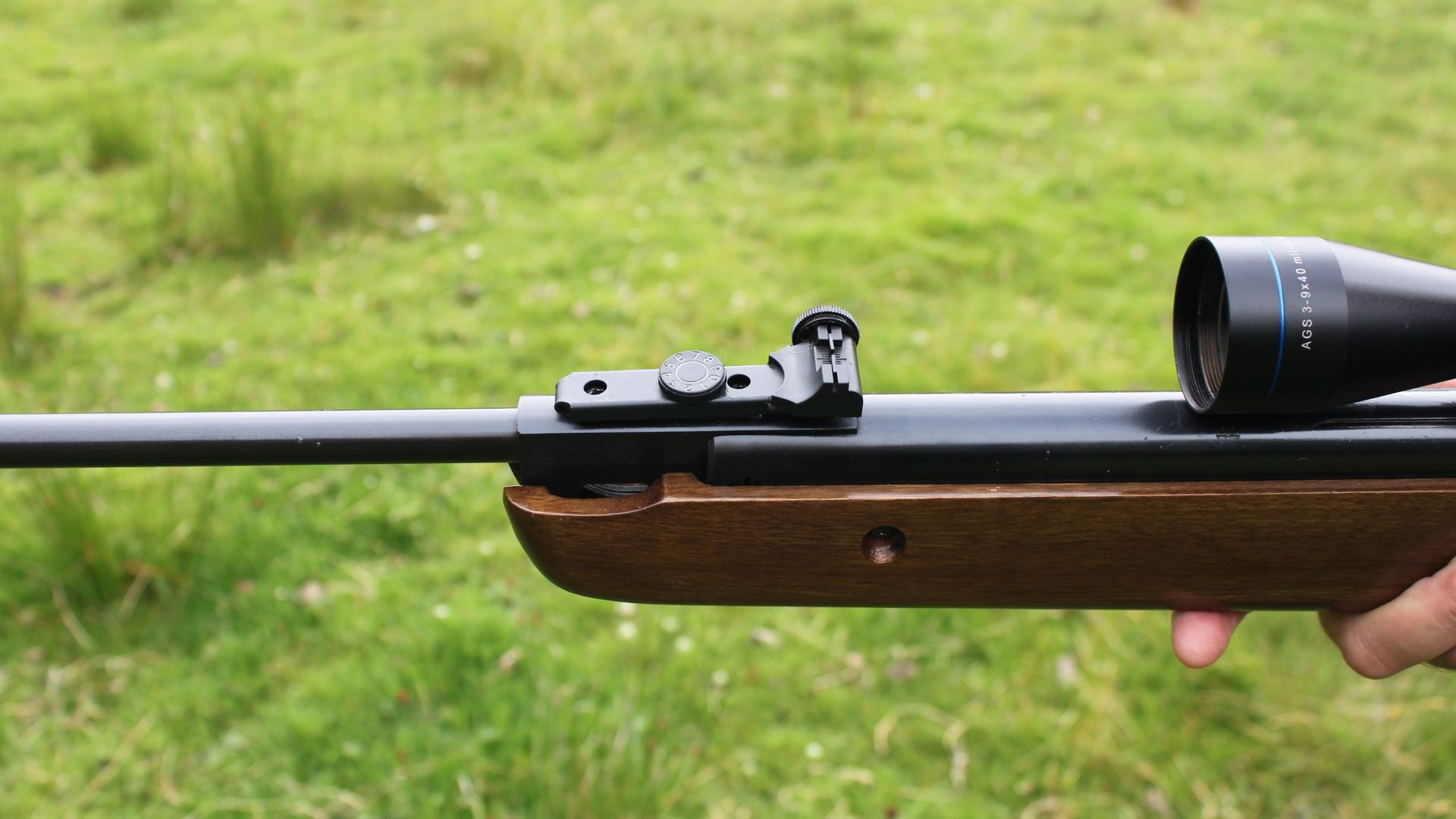 credit: Archant
credit: Archant
Finish and condition of the second hand BAM XS-B19
There are usually some shortcomings on a reasonably priced gun. In my experience, the principle short cut is the overall finish, so in this regard, I was very pleasantly surprised by the overall finish of the gun, and this extended to the metalwork as well as the aforementioned stock. It’s clear to me that some time has been spent in preparing the metal before the final finishing process. The blued finish is far superior to guns of this type from yesteryear – it really is very good indeed.
It’s difficult to give a definitive age, but I think this gun is a few years old, and by the look of things hasn’t received any rough treatment, or heavy usage. Both action and stock are in excellent condition, with no scapes, or corrosion.
The scope, an AGS 3-9 x 40 Cobalt, is in equally good condition, some faint mount marks, but no tube crimping. An interesting feature on this scope is the parallax setting, which I initially thought would need some readjustment. When viewing targets at 30m, I couldn’t work out why the images were still in focus at x9 magnification – I should have read the labelling on the objective bell which stated a parallax setting of 35 yards, just about right for an airgun scope. Well done, AGS!
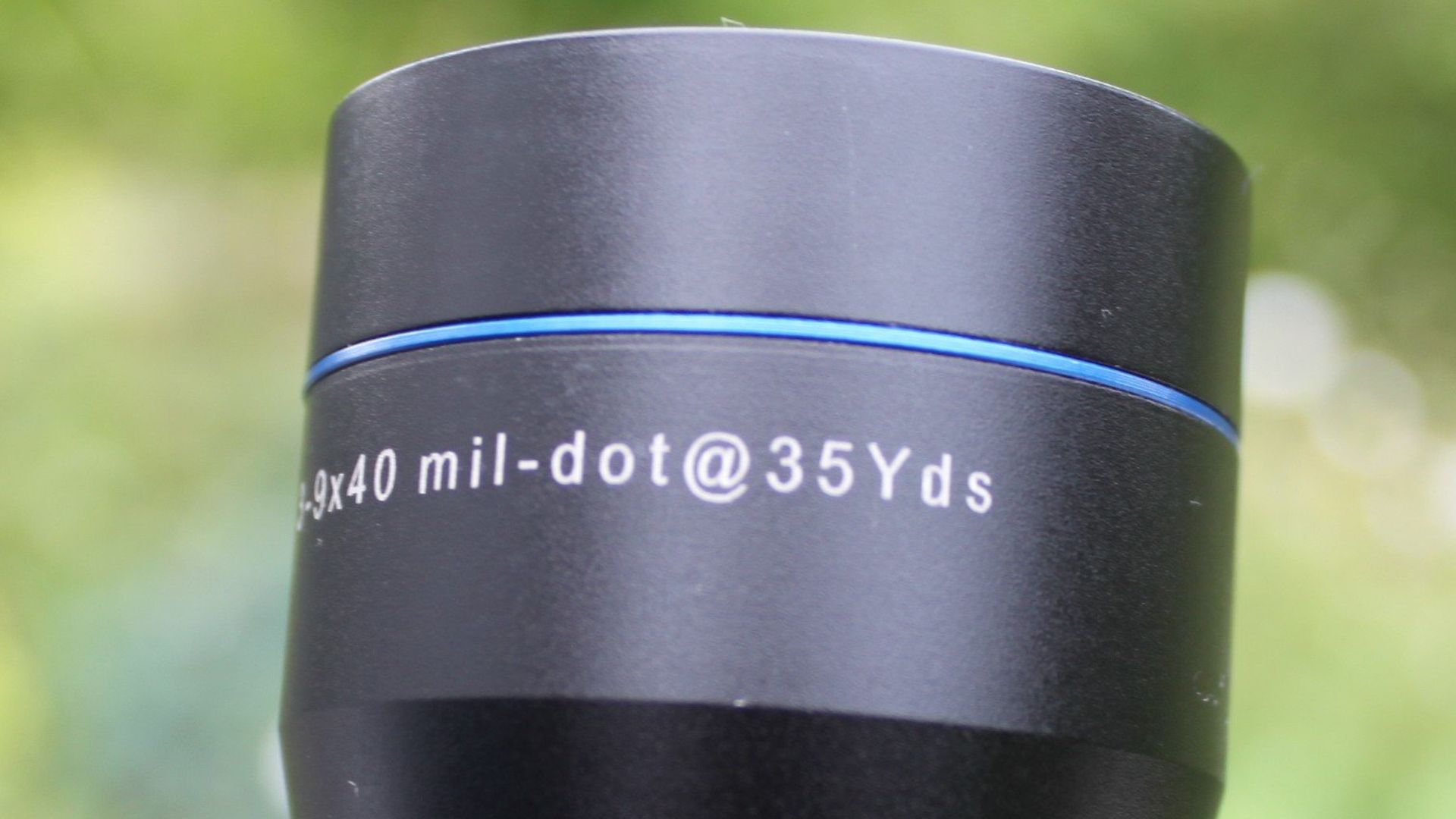 credit: Archant
credit: Archant
Did the second hand BAM XS-B19 shoot well?
Now we come to the important question; how does this budget-beating rifle shoot? Cocking needed a moderate effort, followed by positive engagement of the trigger mechanism. This rifle does have a trigger blocking mechanism, so it can’t be de-cocked, which might be an inconvenience for some, but safer in use.
The discharge was surprisingly devoid of spring noise and that made me think the mainspring might be dampened with grease, although no dieseling was evident. There did seem to be some piston slam evident, which might be caused by a defective piston seal/breech washer. I am aware that some of these guns have a heavy piston weight, which can also exacerbate the problem.
With power hovering around 10.9 ft.lbs. with JSB RS pellets, and targets out at 30m, I proceeded to shoot some groups to establish the rifle’s potential. As is my custom, I used a standing, forearm-leading, hand-braced position.
Matters started well and I thought that things were shaping up nicely, but after about 20 shots things started to slide. Grouping started to become erratic, wandering considerably over the target. Clearly, something had happened over the course of 20 or so pellets, but what?
A quick tightening of the stock bolts, and then a quick change of scope failed to nail down the problem, so I backtracked my earlier examinations, repeated the ‘wiggle test’ on the barrel, and lo and behold, there it was again – considerable lateral movement of the barrel, which I had no doubt was causing the problem.
Although there is a screw holding the barrel in the breech, there is no lock nut or keeper screw to hold its position when tightened down. I think that the constant movement of the barrel through the cocking motion promotes rotation of the screw, thus leading to the loosening encountered – something to look at next month.
Acknowledgements
Neath Gun Shop: www.neathgunshop.com